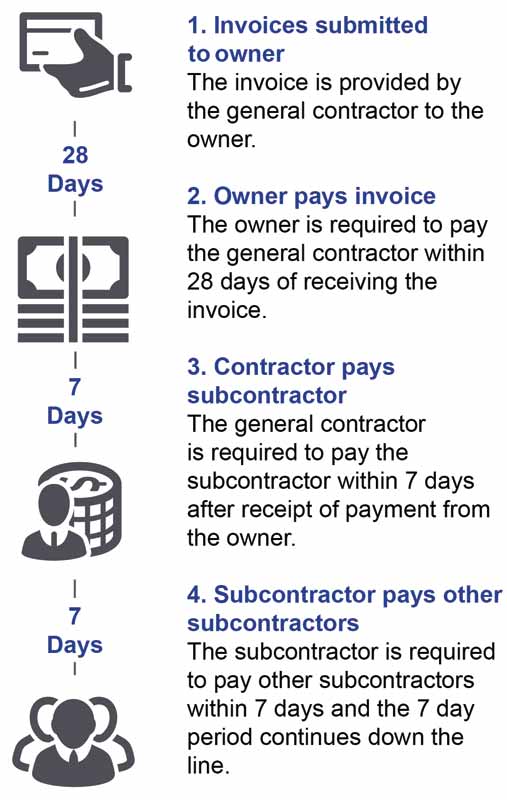Ontario’s new construction act: Summary and timelines of major changes

Remedies in event of non-payment
If the owner does not pay some or the entire invoice to the contractor, the contractor has two options:
- to pay the subcontractor no later than 35 days after giving the proper invoice to the owner; or
- to give notice of non-payment to the subcontractor no later than seven days after receiving notice of non-payment from the owner or, if no notice is given, before the expiry of the 35 days from delivery of the proper invoice to the owner.
If an amount is not paid when it is due under this part of the act, interest shall be paid on the outstanding balance at the prejudgment interest rate determined under section 127(2) of the Courts of Justice Act or, if the contract/subcontract specifies a different interest rate for the purpose, the greater of the two.
Other amendments to the act
Under the new construction act, parties have more time to resolve their disputes outside of litigation, as timelines to preserve and perfect liens are extended from 90 to 150 days. Release of holdback is mandatory, ensuring that after the lien period expires, the owner promptly pays the holdback to the contractor, unless the owner has published a notice of non-payment, and notified the contractor of such publication.
Regarding “lienability,” capital repair is added to the definition of improvement, defined as “all repairs intended to extend the normal economic life or to improve the value and productivity of the land building, structure, or works on the land.” This does not include any maintenance work done to the land. Maintenance is intended to maintain the original condition of the land, building, structure, or work and thus is not part of the improvement. For example, snow removal as part of the regular maintenance will not give rise to lien rights, but snow removal directed by the contractor to clear the way for construction of any improvement is lienable.
In addition, the definition of contractor and subcontractor now includes a joint venture, or joint ventures entered for the purposes of the improvement.
Regarding the definition of price, case law suggests direct out-of-pocket costs incurred ought to be part of the lien but no other damages. Therefore, to bring the case law in line with legislation, the price of a contract is now defined as the contract price agreed between the parties, or the actual market value of the services or materials (if no contract) and any direct out-of-pocket costs of extended duration (excluding delay damages).
Lastly, the act now explicitly states an architect’s right to lien for services or materials supplied to an improvement.
Preservation, perfection, abuse, and discharge of liens
The total lien perfection period has been amended to 150 days, instead of 90. In addition, the time period for preservation of the lien is extended to 60 days from 45. Further, termination will be added to the list of events triggering the start of the clock (time limit) for the preservation of liens. The time period for perfection of the lien is extended to 90 days, up from 45, from the last day on which that lien could have been preserved.







